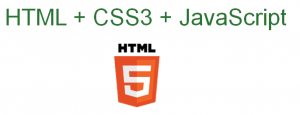Here’s my 2012 web developer wish list for improvements that I’d like to see happen in the web developer world. If HTML and JavaScript want to be considered enterprise ready for commercial-grade deployments then here’s some things that are needed today.
For clarity, I consider a commercial software deployment to be one that contains over one thousand lines of code, at least two custom .js libraries and involves at least two developers and some sort of code versioning system.
- Refactoring. Not having this capability continues to be a huge productivity issue for large projects. Try refactoring across six JavaScript libraries and 1200 lines of code using Notepad++.
- Even stronger scope enforcement in JavaScript classes. One wrong misspelling and you can spend fun filled hours (or days) tracking down a private variable that turned itself into a global variable.
- Built-in support for code comments. Visual Studio does a fine job, for example. But, it’s still kind of a hack to make it work. I’d like the built-in ability to create comments for methods and classes directly and then be able to access those comments via intellisense throughout any file in the project. Again, this is all about productivity by having this information accessible at your fingertips.
- Better built-in JavaScript checking for IDEs. I’d like to see built-in JSLint-like capabilities that have been updated to the latest HTML, JavaScript and CSS3 versions, and not some third party plug-in that’s optional.
- Best practice whitepapers. These would be whitepapers written by the browser vendors that provide guidelines on the correct patterns to use when building apps against their browsers. Seriously, it’s been roughly 21 years since we started using browsers and there’s no guidance at all from the powers that be. Honestly, I’m stunned that these don’t exist. That would be similar to Microsoft publishing .NET and then not providing any conceptual help documentation.
- Official tools for browser certification and testing. The folks that build the browsers don’t give us a way to verify if we are building our apps in the best way possible. If these items existed, then quality could get a lot better, and we’d all learn a lot too.
- Slower browser release cycles. A slower release cycle for browsers and more improved security and stability. I already blogged about this here.
